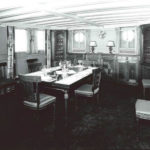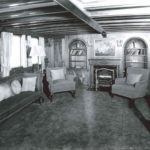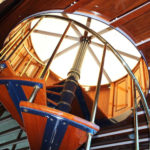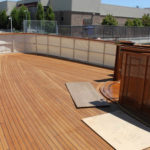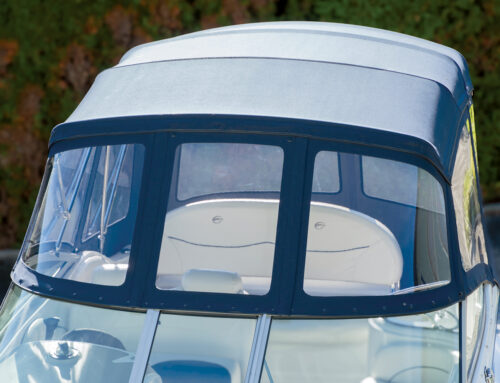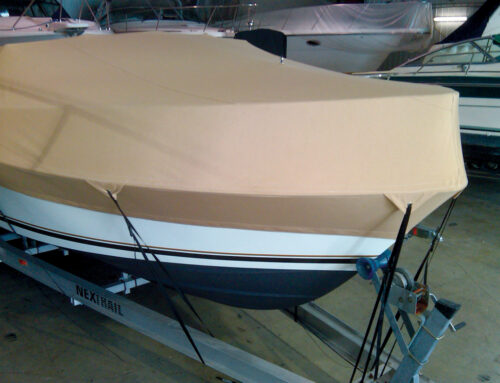Bringing back Acania
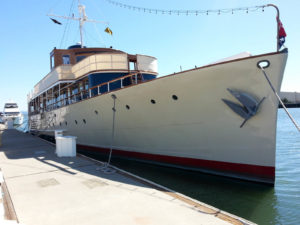 Faithful restoration brings back the style of the roaring ’20s.
Faithful restoration brings back the style of the roaring ’20s.
Back in the 1920s and ’30s, large, luxurious cruising yachts were status symbols—often produced for the wealthy who sought to entertain and delight their guests in these elaborate vessels. When built, they earned accolades aplenty—even The New York Times published articles touting the ordering and design of these majestic yachts. One such yacht was Acania. Built in 1930, Acania was a celebrated diesel motor yacht constructed by the famous New York ship builders Consolidated Shipbuilding Corporation. Now, 85 years after her initial construction, her current owner, Dave Olson, is working hard to bring her back to her former glory.
A celebrated history
The “Roaring ’20s” and early 1930s were a time in U.S. history when some of the wealthiest citizens of the country reveled in the beauty and majesty of elaborate architecture and design of homes, office buildings, resorts and yachts.
One such individual was Arthur E. Wheeler, a prominent Wall Street banker, who commissioned Acania to be built in 1930. Designed by naval architect John H. Wells, the 136-foot yacht was one of a handful of large diesel-driven cruisers that was fitted out as a high-end luxury vessel with elaborate accommodations representative of the golden age of the “Roaring ’20s.”
“She is a handsome, timeless design that is pleasing to the eye and practical in use,” says owner Olson. “Her accommodations include four staterooms, a lovely sitting room, sun decks, a formal dining room with supporting galleys, a hideaway bar (an obvious necessity for the Prohibition era) and quarters for a full crew.”
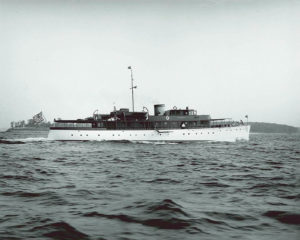
Acania in 1930. Prior to the Great Depression of the 1930s, wealthy Americans reveled in the beauty and majesty of elaborate architecture and the design of homes, office buildings, resorts and yachts.
Acania is one of America’s great motor yachts and possibly one of the few that has remained as she was built. Jeff Viehmeyer, a member of the Marine Fabricators Association, and his team at Alameda Canvas & Coverings in Alameda, Calif., were pleased to have a part in Acania’s restoration.
As Viehmeyer explains, “The owner’s intention was to bring her back to that glorious era of simple, yet refined motor yachting of the ’20s and ’30s. Her restoration was accomplished with a great team of craftsman who were passionate, not only for the job at hand, but for the enthusiasm of restoring Acania as a piece of nautical history.”
Acania was sold in 1935 to the Walgreen family, who used the yacht frequently until it was commandeered for World War II duty by the U.S. Navy for $1 a year.
After the war, in 1947, Acania went through a series of owners, and for a number of years a portion of her history is shrouded in mystery. For nearly 30 years—from 1957 to 1985—just who owned the vessel and its whereabouts is unknown.
Acania was acquired by Olson in 2008, and recently underwent a massive six-year restoration in Alameda.
The organic materials and shapes work wonderfully together to interest the eye while creating a peaceful, Old World atmosphere that pulls you in.
Restoration and renewal
For more than six years, the Acania restoration was a labor of love involving many skilled artisans and one very dedicated owner. Fortunately, she has been altered only slightly since her launch in 1930. This was a very rare find since most vessels her age have had several refits and extensive layout changes.
As part of the restoration, Acania’s steel hull has had major structural repairs, the decks have been replaced, and most of the interior woodwork has been restored. Aside from new systems and power, the only major reconstruction required was the galley and the serving pantry, which were completely gutted. In the engine room, while the power plants are new, the original telegraphs and some of her incredible original electrical panels were kept for display purposes.
The aft deck salon has been enclosed with magnificent teak windows, some of which were custom formed to fit the compound curves of her canoe stern. “It’s an absolutely beautiful place to sit and relax,” Viehmeyer says. “The organic materials and shapes work wonderfully together to interest the eye while creating a peaceful, Old World atmosphere that pulls you in.”
All of the staterooms and bathrooms were restored with period pieces, including custom light fixtures and chandeliers, and two new 600-horsepower Caterpillar engines were installed.
As Viehmeyer explains, the owner actually bought a small historic Alameda shipyard so the work could be performed in a facility totally dedicated to the restoration. The combination of discreetly installed modern systems, and archival quality interior restoration keep with classic tradition, while making Acania a premier super yacht for today.
For Viehmeyer, one of the most challenging aspects of the restoration was the spiral staircase cover. “The mirror-finished spiral staircase is completely open to the elements on the top deck, making the need for a cover critical,” he says. “The unique requirements for the cover were that it had to be strong, easy to install and remove, yet be esthetically pleasing from top, sides and even the bottom, since it would be viewed from the salon below.” No conventional covers would be up to this job.
The final solution was to use a Sunbrella fabric closely matching the color of the ship’s hull, and create a full covering with integrated supports that radiate out from the center support, much like an umbrella. The owner had aluminum bars fabricated as support ribs, and padded sleeves were made for each, such that they would support the area over the staircase without any other attachment. Since the center staircase post was higher than the sides, a natural water shedding slope was created.
In use, the cover snaps around and underneath the finished outside staircase trim, so fasteners are not visible. The support ribs rest on the outer rim and come together at the center post. For removal and storage, the aluminum ribs are removed from their pockets and the cover can be stored like any other.
Another challenge was fitting the custom top deck railing weathercloths. This was done in a large workshop at the ship’s dock, and later the entire completed railing sections were installed as a unit. The compound curves on several sections required careful cutting of the material and clamping as the fabric was attached. What looks like a straight section in some cases is really an “S” curve when the fabric is flattened out.
After six long years of restoration, Olson enjoyed Acania on the water at the America’s Cup race in San Francisco Bay, and now for passages along the West Coast. Future plans include regular use sailing in U.S and European waters by the owner, his family and guests.
Maura Keller is a freelance writer from Plymouth, Minn.
-
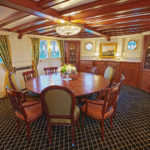
- With such a longstanding history and an unusual past, Acania has long been rumored to have been owned by the notorious gangster Al Capone. This is supported in part by the unusual early ownership records, the secret bar, the many hidden and disguised lockers—including a hidden champagne locker—and the unusual coating on the water tank with “out of place” piping masquerading as tank vents and fill pipes.
-
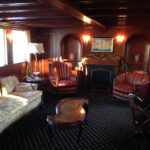
- All of the staterooms and bathrooms were restored with period pieces, including custom light fixtures and chandeliers.
-
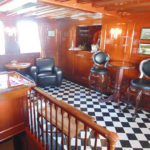
- All of the staterooms and bathrooms were restored with period pieces, including custom light fixtures and chandeliers.
 TEXTILES.ORG
TEXTILES.ORG 


